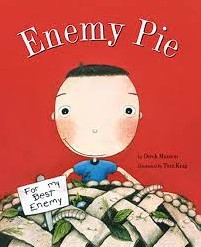A while back I wrote a post about struggling with the decision of sending my late-summer birthday child to kindergarten this year, or holding her back for a year and waiting until she was a little older and more mature.
My husband and I went back and forth on this decision for basically five years. No, I’m not even being dramatic about that, it really was something that from the time she was born until the day I sent her to her first day of school, we were going back and forth about when the right time was to send her. Ultimately, we came to the conclusion that she would start kindergarten this year, the year she was technically supposed to start, not a year late.
The majority of this decision was intuitive. We did look at research and listened to advice from friends and neighbors that had been in similar circumstances, but at the end of the day, we made a decision for what felt best for her specifically. In fact, a lot of the research you read online leans towards sending kids to kindergarten later/ when they are older, but ultimately it didn’t feel right for her.
We even had a curveball thrown at us because initially, we were living in a school district with half-day kindergarten and plenty of familiar friends that would be in class with her so it felt safer. But through a turn of events, we ended up moving to a different school district and even a different state. The elementary school in our new location is full-day kindergarten, 4-day school weeks, and because of moving, no familiar faces.
You would think it would be plenty of reason to delay kinder one year to give her and us time to make friends and time for her to grow and become comfortable in her new environment. However, at the end of the day, we still felt like we were making the right decision. I was nervous through the whole process, constantly wondering if we were making the right call.
The first day of kindergarten came and walking her through the hallways of this new, big school, I still had the thought, “I could take her home right now. I can still put school off for another year. She doesn’t have to go to school right now.” Yet still, we put one foot in front of the other, and we were both as brave as we could be as we walked into that new classroom with a backpack full of crayons and pencils inside of her clear pencil box decorated with princess stickers.
Okay, let’s be honest here. My daughter walked into that classroom as confident and excited as can be. I, on the other hand, was the one trying to put on a brave face.
Even after leaving her at the school, walking out the doors, and calling my husband with a shaky voice on the verge of tears, I stood by my gut instinct that was telling me it was time for her to go to school. It was incredibly hard to have my brain, my heart, and my instincts all pulling me in different ways, where ultimately, all of them were the right decision.
After the first week of school, I started feeling really good about our decision. And after a few months of school when we attended our first parent-teacher conferences, I approached my daughter’s teacher about the subject. I told her about our internal struggle of sending her this year to school or waiting until next year and was wondering how she was doing overall, not just how she was doing on her test scores.
What she said next has stuck with me and helped me on the days that I doubt myself. She said, “You couldn’t have made a better decision for her. She is absolutely thriving in this classroom. She fits in so well with her peers, even if a lot of them are quite a bit older than her. Had you waited until next year, I don’t think she would have felt so at home and fit in as well. She would have been significantly older and struggled with friendships. And academically, she’s right where she needs to be.”
You couldn’t have made a better decision for her. She is absolutely thriving in this classroom.
This was the validation I needed. I felt massive amounts of confidence after hearing this from her teacher.
It was one of the hardest, more tearing decisions I’ve ever had to make for my kids, but I’m so happy I stuck with my gut and chose what she needed, regardless of what I wanted.
Isn’t it wild that watching your kids get older and experience new things can be so sad and so incredible at the same time?










